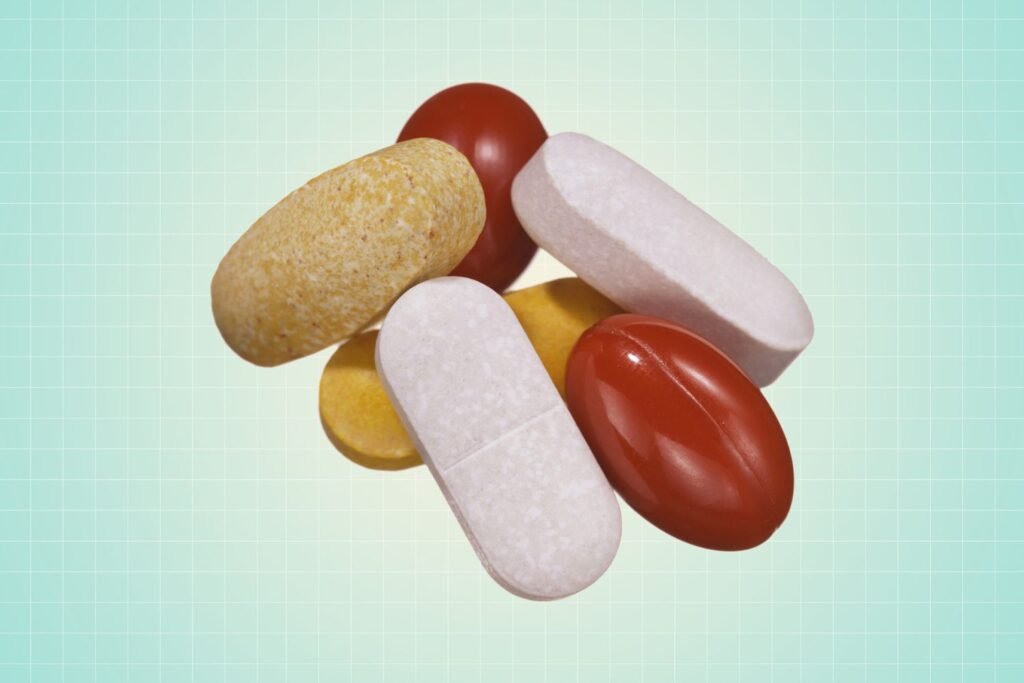Multivitamins are one of the most commonly consumed dietary supplements worldwide. Many people take them daily to ensure they get their recommended intake of essential vitamins and minerals. But the question remains: Is a multivitamin enough to meet all your nutritional needs? This article explores the efficacy of multivitamins, their benefits, and whether they can replace a balanced diet.

The Role of Multivitamins
Multivitamins are designed to deliver a combination of essential vitamins and minerals in one convenient pill. A standard formula typically includes vitamins A, C, D, E, and K, alongside B-complex vitamins, iron, calcium, magnesium, and zinc. The purpose is simple: to fill in nutritional gaps that might arise when someone’s diet isn’t perfectly balanced. For individuals with food allergies, restricted diets, or lifestyles that make healthy eating difficult, multivitamins act as an insurance policy against deficiency.

Benefits of Multivitamins
- For many, multivitamins provide reassurance. They offer a safety net for people who may not always hit their recommended intake of essential nutrients.
- One benefit is nutritional insurance. Even if your diet falls short, multivitamins provide baseline coverage. This is particularly useful for vegetarians, vegans, or individuals with food intolerances who may lack certain nutrients.
- Another advantage is immune support. Vitamins like C and D are well known for their role in boosting immune function. Consistent intake through multivitamins may help reduce infection risk and keep the body’s defences strong.
- Multivitamins also support bone health, with vitamin D, vitamin K, and calcium working together to strengthen bones and reduce the risk of osteoporosis. Meanwhile, energy levels benefit from B vitamins, which play a central role in converting food into usable energy. For individuals with deficiencies, this boost can be significant.
READ MORE: Alpha GPC, the Brain Supplement?

Limitations of Multivitamins
Despite their convenience, multivitamins are not a perfect solution. One key issue is bioavailability—how well the body absorbs nutrients from supplements compared to whole foods. Vitamins and minerals in pill form may not be as easily utilised by the body, and absorption can vary widely.
Another concern is over-reliance. Some individuals take multivitamins as a replacement for a healthy diet, which is risky. Whole foods not only contain vitamins and minerals but also fibre, antioxidants, and phytochemicals that supplements cannot replicate.
There is also the danger of excess intake. Too much vitamin A, for instance, can cause toxicity, while excess iron can lead to digestive issues or more serious health problems. Furthermore, nutrient interactions within multivitamins can affect absorption—such as calcium inhibiting the uptake of iron and zinc.

Are Multivitamins Necessary?
Whether multivitamins are essential depends on the individual. Someone with a varied diet rich in fruits, vegetables, whole grains, and lean proteins may not need them. However, for those with specific dietary restrictions, chronic health conditions, or known deficiencies, multivitamins can be valuable support.
In the UAE, multivitamins are especially popular among busy professionals and expatriates who may find it challenging to maintain consistently balanced diets. Pharmacies in Dubai and Abu Dhabi stock a wide range of multivitamin products tailored to different needs, reflecting the demand in a fast-paced lifestyle culture.

Expert Opinions
Experts remain divided. Dr Walter Willett of Harvard T.H. Chan School of Public Health notes: “A multivitamin can provide a useful backup plan to fill in some nutritional gaps, but it’s not a magic bullet.” Similarly, Dr JoAnn Manson of Brigham and Women’s Hospital stresses that supplements cannot replace a healthy diet: “Fruits, vegetables, whole grains, and healthy fats provide a wide array of nutrients and bioactive compounds that work synergistically to promote health.”
From my own perspective, I’ve noticed how often people reach for supplements as a quick fix, rather than examining the quality of their overall diet. While multivitamins can certainly help, they shouldn’t become an excuse to neglect proper nutrition.
Both experts and observations highlight the importance of nutrient density in whole foods. Beyond vitamins and minerals, foods provide fibre, antioxidants, and compounds that improve absorption and overall wellbeing in ways no pill can replicate.

The Verdict
Multivitamins can be a valuable tool, but they are not a cure-all. They serve best as a supplement, not a substitute, for a diet rich in whole foods. While they help fill nutritional gaps, relying on them exclusively risks missing the broader benefits of fresh, varied nutrition. For individuals with deficiencies or dietary limitations, they may provide essential support—but guidance from healthcare professionals is always recommended before starting supplementation.
FAQs:
- Are multivitamins necessary? Not always. For many with balanced diets, they may be unnecessary, but they help those with restrictions or deficiencies.
- What are the benefits of multivitamins? They support immunity, bone health, energy, and act as nutritional insurance for dietary gaps.
- Can multivitamins replace whole foods? No. Whole foods provide fibre, antioxidants, and bioactive compounds supplements cannot replicate.
- Can taking too many vitamins be harmful? Yes. Excess intake of nutrients like vitamin A or iron can cause toxicity and health problems.



